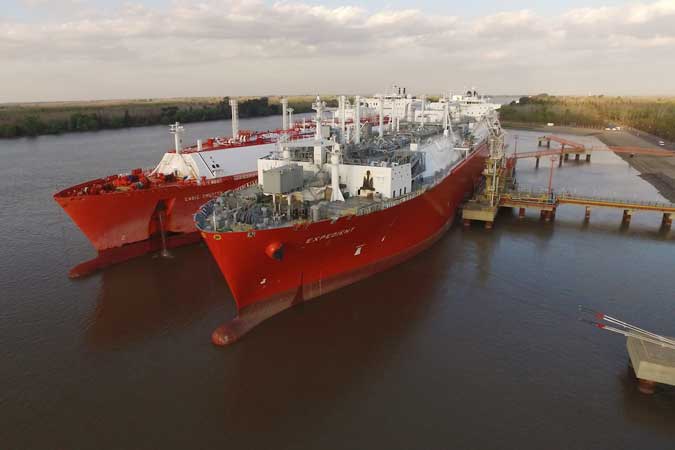THE DEPARTMENT of Energy (DoE) said Tuesday that it is evaluating applications filed by two parties seeking to build liquefied natural gas (LNG) terminals.
The DoE has thus far issued permits for five proposed LNG regasification terminal projects.
“There are two other applicants that are currently being evaluated by the Department of Energy. I would have to check as to what stage those two applications are in,” DoE Assistant Secretary Leonido J. Pulido III said during the virtual 2nd LNG and Clean Energy Investment Summit.
He was replying to a question on whether there were any new applicants proposing LNG terminals. He did not provide details on the applications.
According to Mr. Pulido, the department has yet to receive a formal application from companies proposing LNG terminals in the Visayas and Mindanao, though it has been in preliminary talks with “several entities.”
The five permit holders are clustered in Batangas, where the country’s gas-fired power plants are concentrated because the province is the landing area for gas piped from the Malampaya project. These are FGEN LNG Corp., Excelerate Energy L.P., Batangas Clean Energy, Inc., Energy World Gas Operations Philippines, Inc., and Atlantic Gulf & Pacific Company of Manila, Inc. (AG&P).
FGEN LNG Corp. and Energy World both hold permits to construct an interim floating storage and regasification unit (FSRUs) and an onshore LNG terminal, respectively.
Excelerate and AG&P have notices to proceed (NTP) for their FSRU and floating storage unit and onshore gasification terminal, respectively. Batangas Clean Energy currently holds an NTP for an onshore terminal.
During his talk, Mr. Pulido said that one of the main criteria used in evaluating the applications is financial viability.
“If the proponents believe — and as evaluated by the DoE — that the projects are financially viable, that the projects will get off the ground and the projects will be established, then go. Then we support these projects,” he said.
Mr. Pulido said that it should have “ideally been the National Government’s role to build the needed infrastructure, but this could not be done as there were other priorities that had to be pursued.”
“(The building of LNG infrastructure is) a private sector-led, private sector-driven initiative so we’re dependent on the private sector,” he said.
In October, Energy Secretary Alfonso G. Cusi said LNG imports remain the best option to address power requirements over the next few years.
The Malampaya field, located off northern Palawan, was able to provide 3,200 megawatts of electricity, accounting for 21.1% of the country’s gross power generation in 2019, though its reserves are depleting. — Angelica Y. Yang

